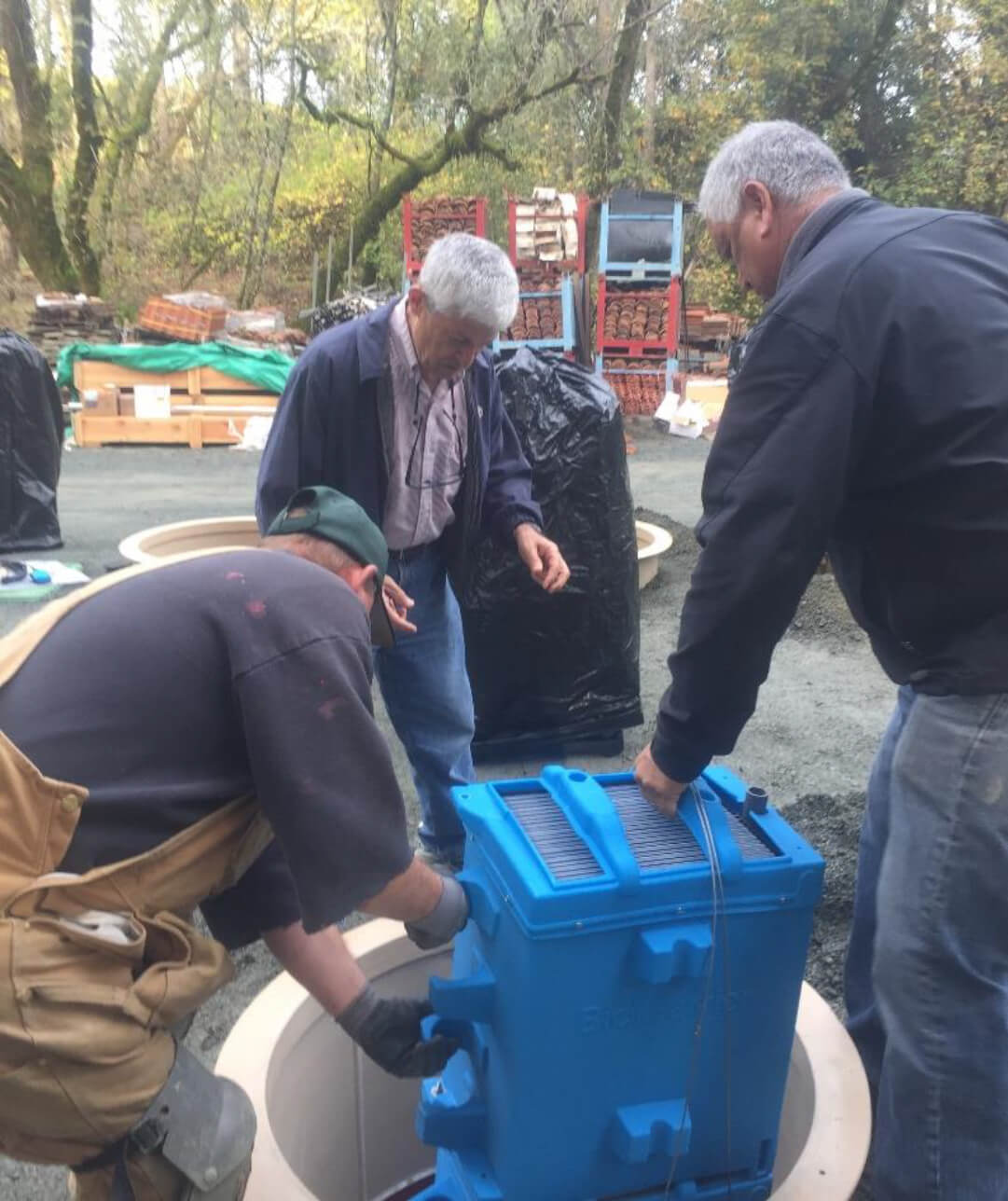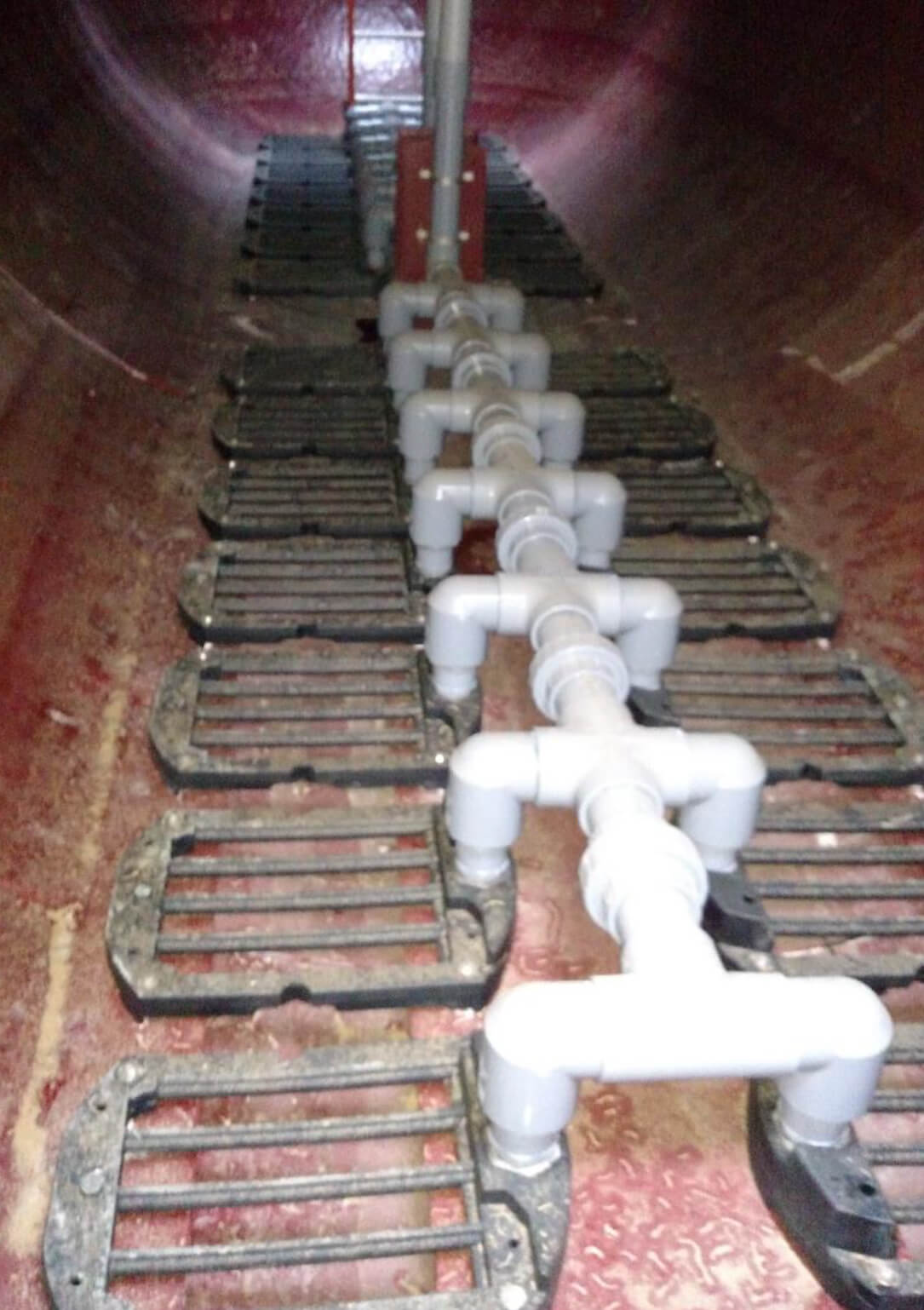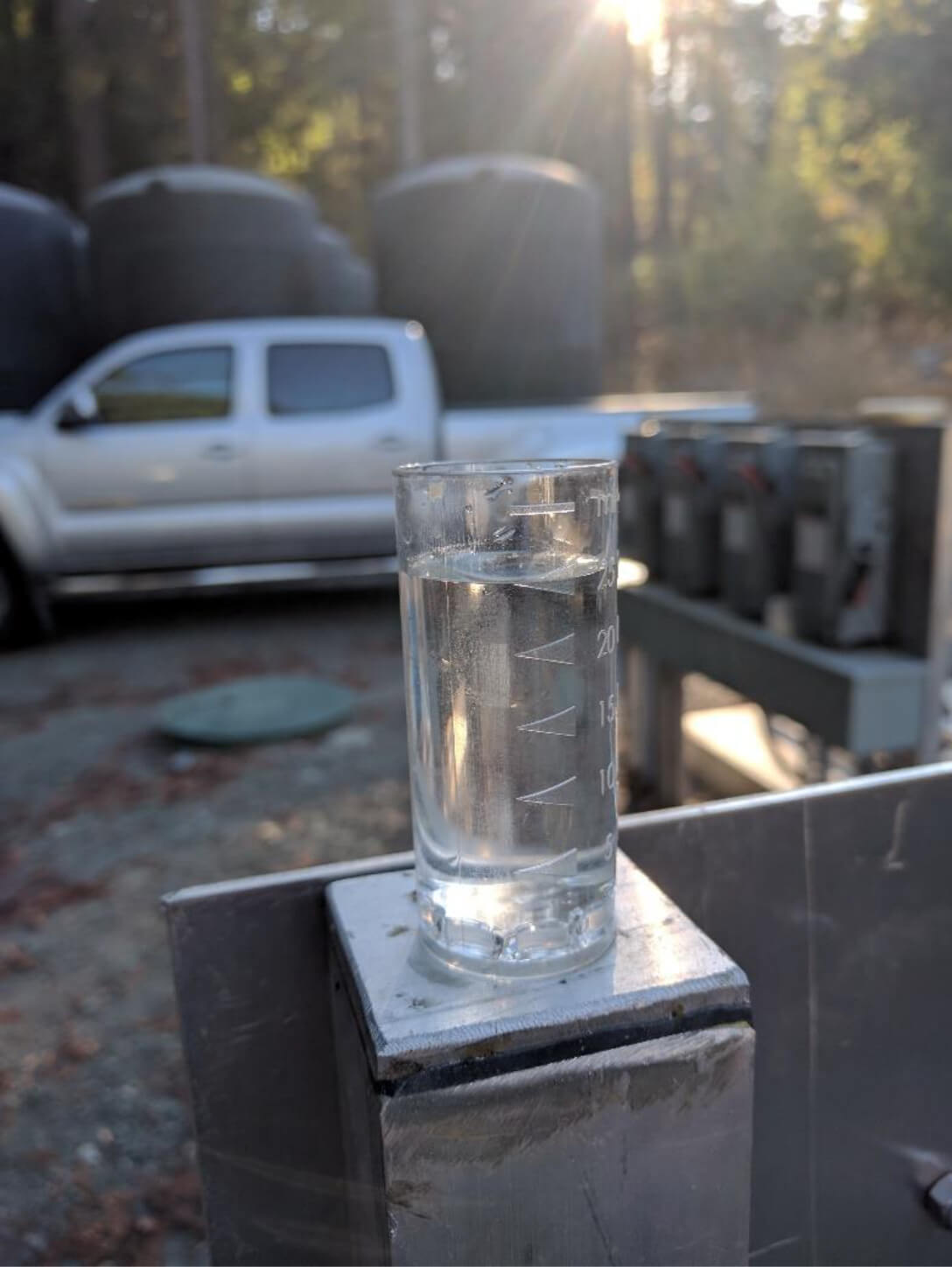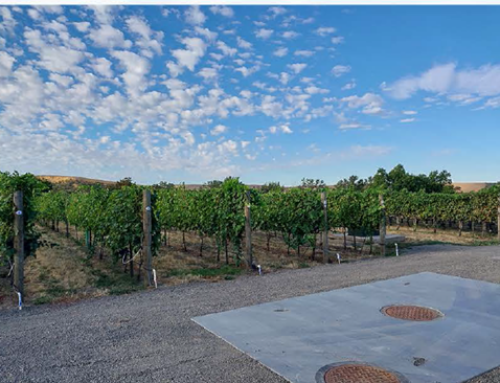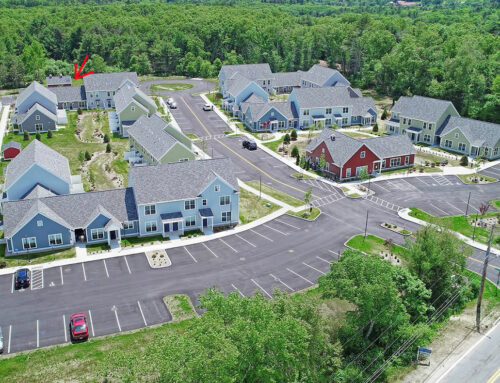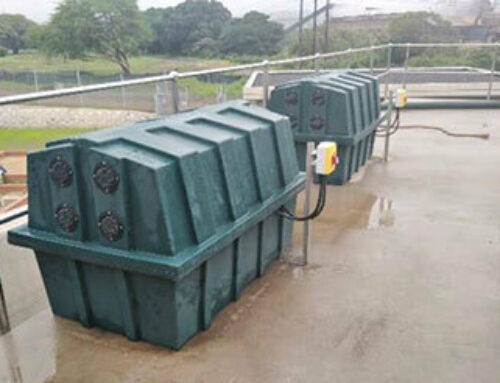Castello di Amorosa Winery & Vineyard
http://www.thembrsite.com/directories/case-studies/castello-di-amorosa-winery-vineyard
Application highlights
- 1.35 million gallons of wastewater treated and reused in first year of operation
- Tanks and treatment system are a high-efficiency, low-maintenance pairing
- Winery wastewater treatment with BioMicrobics and ZCL | Xerxes is now Napa Green-certified
- Corrosion resistance of fiberglass is advantage in winery’s acidic soil
- Three 22,000-gallon fiberglass water tanks (10-foot-diameter)

When its leach field failed, the owners of Napa Valley winery Castello di Amorosa knew it was time to reconsider their water system. California had experienced a series of droughts, which resulted in increased water-use restrictions.
The winery’s environmental values led to a search for the best treatment-system science, design and tank material. Three ZCL | Xerxes 22,000-gallon/ 83,000-liter fiberglass water tanks replaced the previous concrete tanks.
A BioBarrier® HSMBR® (High Strength Membrane Bioreactor) treatment system was installed inside each tank. Placed underneath the membrane modules, aeration grids promote aerobic microbes that metabolize and digest the wastewater. The wastewater then passes through the membranes for ultrafiltration. Up to 99.9% of contaminants are removed by this process. The treated wastewater is then discharged from the ZCL | Xerxes Tank.
BioBarrier® MBR and BioBarrier® HSMBR® are membrane aerated biofilm reactor technologies certified for onsite and water reuse applications. These packaged wastewater treatment plants meet the challenges of difficult site conditions and varying wastewater concentrations. Certified for water reuse (NSF/ANSI 40/245/350, EN12566-3, and CAN/BNQ 3680-600), the BioBarrier systems are complete, optimized wastewater and Graywater systems that provide high levels of treatment.
From 250 GPD to 100,000+ GPD flows, the immersed, aerated, membrane technology allows for installation into a smaller footprint with either above or below ground tanks. They meet water quality requirements for the reduction of chemical and microbiological contaminants for non-potable water use. The treated wastewater (high-quality effluent) can be used for restricted indoor water use or unrestricted outdoor water use.
Each of the three tanks operates independently in order to meet the winery’s wastewater needs, which can vary significantly day to day. During the most water-intensive times — when wine is bottled and barrels are washed — all three tank systems run, treating up to 9,000 gallons/34,000 liters of water per day. A whole day’s water flow may go in and out of the three tanks in less than an hour. That level of flow requires surge protection for a high volume of flow so the treatment process isn’t interrupted.
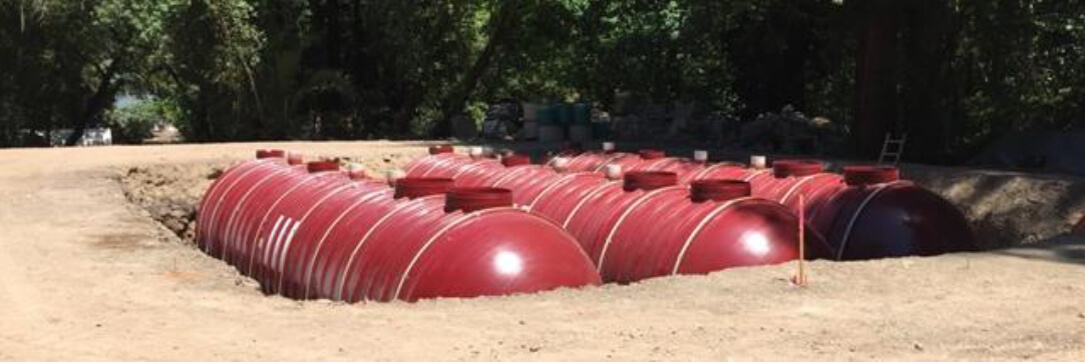
The BioBarrier system’s flat-sheet membranes (0.03 to 1.3 micron pores) physically separate the solids and bacteria from wastewater to keep them in the tank, allowing the treated water (high-quality effluent) to exit the tanks by means of a submerged filtrate pump. The resulting water can be reused in numerous ways, including vineyard irrigation.
Over 1.35 million gallons of water treated and reused in first year!
The Castello di Amorosa wastewater system is designed to store waste sludge for at least one year of continuous operation. This minimizes cleaning and maintenance, a plus especially for small wineries where the owners do the maintenance themselves. Both the winery and land have recently received Napa Green-certification, which means they meet all the regulatory components needed for environmental sustainability, including water conservation and water efficiency.
Celebrating Sustainable Projects

Every year, Industrial Water & Wastes Digest and its parent magazine Water & Wastes Digest accept nominations for Top Projects. The editorial team individually evaluates each project and provides scores for each of them. From these, we get a short list of the best projects and we then meet to determine the best of the best.
Text BoxIn this issue, you will learn about the best industrial water and wastewater projects nominated for the iWWD Top Projects awards this year. Projects range from managing wastewater at New Belgium Brewing Co. to conserving water at Castello di Amorosa winery in California. Others highlight work efficiency with smart systems or overcome engineering obstacles to find success.
My favorite part of reading through the nominations each year is just how far industrial users are going to improve their water and wastewater management to conserve water or safeguard the environment.
While there likely is some truth to some companies green washing—conducting sustainability initiatives to distract from other environmentally dubious outcomes so as to appear environmentally friendly—I feel that many are introducing these platforms in earnest.
What is good for business has not always been good for the environment. But now companies are starting to recognize that what is good for the environment can also be good for business and growth. It can reduce waste and improve efficiency. It can save energy, reduce overhead and lead to a more satisfied and engaged workforce.
Seeing how companies and businesses are accomplishing this through tangible actions is really interesting and exciting.
Castello di Amorosa Winery in Calistoga, Calif., is a 107 room castle that sits against Napa County’s Mayacamas Mountains and overlooks all of Wine Country.
Introduced to the Northern California wine region of Napa and Sonoma County in 2013, the BioBarrier® high-strength membrane bioreactor (HSMBR®) winery wastewater treatment system’s recent installation has generated interest due to its treatment capabilities, ease of installation and low operating costs.
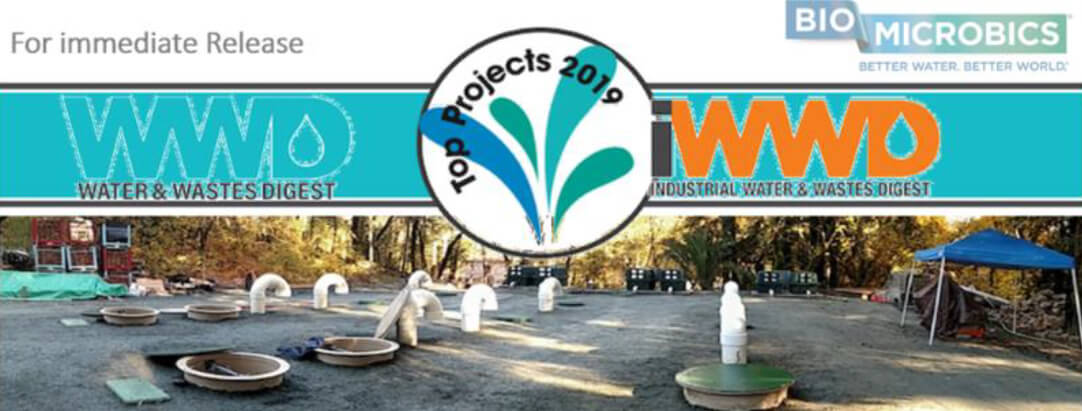
In the spring of 2017, BioMicrobics paired its HSMBR treatment system with ZCL | Xerxes 22,000 gal underground fiberglass tanks at Castello di Amorosa winery. The Castello di Amorosa system is comprised of a three train tank configuration. Three BioBarrier HSMBR 3.0 in each tank can treat up to 9,000 gal per day (gpd) of high-strength winery wastewater, and the ultrafiltration BioBarrier HSMBR system in each ZCL | Xerxes tank can treat up to 6 gal of water per minute. The BioRobic BioAeration grid packages consist of 35 air grids per train.
The new system replaced concrete tanks and a leach field, which had failed. Since the start-up of Napa Green Certified Winery’s new wastewater system, the Castello di Amorosa has treated and reused 3.2 million gal of water to date.
Whether the treated water will be reused or if it is for direct discharge, the BioMicrobics wastewater treatment systems help to conserve natural resources, protect ground/surface water and overcome land constraints.
As the Napa Valley Wine Region continues to address winery wastewater concerns, the BioBarrier HSMBR system produces wastewater suitable for irrigation, treating it more as a resource rather than a waste product. With broad opportunities to achieve a largely sustainable operation at wineries, the MBR and HSMBR winery wastewater treatment systems can process all the water sources in one single treatment system with wastewater exceeding typical local regulatory requirements.
Unlike residential wastewater, winery process wastewater usually does not contain pathogenic bacteria in the waste stream; however, biochemical oxygen demand (BOD) and total suspended solids (TSS) are found in significantly higher concentrations. BOD and TSS concentrations can be 40 times as high as household wastewater with 12,000 mg/L BOD and 6,000 mg/L TSS typical during harvest activities.

At other times of the year, the various winemaking activities create fluctuating flows, which create system over-capacity concerns. The need for versatility in design and operation is key in selecting a winery wastewater treatment system.
As the Pacific Northwest Wine Region continues to address winery wastewater concerns, the HSMBR system provides water reuse opportunities such as quality irrigation water for vineyards, recycled water for dust control, processing area wash-down water, or highly treated wastewater for disposal where untreated or poorly treated winery wastewater threatens vital habitats or groundwater resources.
Both the winery and land have recently been Napa Green-certified, which means they meet all the regulatory components needed for environmental sustainability, including water conservation and water efficiency.


